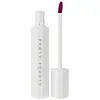What's inside
What's inside
 Key Ingredients
Key Ingredients

No key ingredients
 Benefits
Benefits

 Concerns
Concerns

 Ingredients Side-by-side
Ingredients Side-by-side

Water
Skin ConditioningDiphenyl Dimethicone
EmollientDiisostearyl Malate
EmollientBis-Diglyceryl Polyacyladipate-2
EmollientHydrogenated Polyisobutene
EmollientGlycerin
HumectantCetyl PEG/PPG-10/1 Dimethicone
EmulsifyingDipropylene Glycol
HumectantSorbitan Isostearate
EmulsifyingPolysorbate 60
EmulsifyingOctyldodecanol
EmollientPentylene Glycol
Skin ConditioningCeteareth-20
CleansingHydroxyethyl Acrylate/Sodium Acryloyldimethyl Taurate Copolymer
Emulsion StabilisingSqualane
EmollientPhenoxyethanol
PreservativeEthylhexylglycerin
Skin ConditioningTitanium Dioxide
Cosmetic ColorantCI 15985
Cosmetic ColorantCI 45410
Cosmetic ColorantCI 17200
Cosmetic ColorantCI 19140
Cosmetic ColorantCI 42090
Cosmetic ColorantWater, Diphenyl Dimethicone, Diisostearyl Malate, Bis-Diglyceryl Polyacyladipate-2, Hydrogenated Polyisobutene, Glycerin, Cetyl PEG/PPG-10/1 Dimethicone, Dipropylene Glycol, Sorbitan Isostearate, Polysorbate 60, Octyldodecanol, Pentylene Glycol, Ceteareth-20, Hydroxyethyl Acrylate/Sodium Acryloyldimethyl Taurate Copolymer, Squalane, Phenoxyethanol, Ethylhexylglycerin, Titanium Dioxide, CI 15985, CI 45410, CI 17200, CI 19140, CI 42090
Cyclopentasiloxane
EmollientDiisostearyl Malate
EmollientKaolin
AbrasiveTrimethylsiloxysilicate
EmollientCaprylic/Capric Triglyceride
MaskingPolypropylsilsesquioxane
Dimethicone/Vinyl Dimethicone Crosspolymer
Skin ConditioningSilica
AbrasiveDisteardimonium Hectorite
StabilisingMethyl Methacrylate Crosspolymer
Dimethicone/Vinyltrimethylsiloxysilicate Crosspolymer
Alcohol Denat.
AntimicrobialTocopherol
AntioxidantTerminalia Ferdinandiana Seed Oil
AntioxidantPrunus Avium Seed Oil
EmollientCitrus Tangerina Peel Extract
AstringentCitrus Aurantium Dulcis Peel Extract
Emulsion StabilisingCitrus Grandis Peel Extract
AstringentCitrus Junos Peel Extract
Skin ConditioningCitrus Clementina Fruit Extract
Skin ConditioningHedychium Spicatum Extract
Skin ConditioningZingiber Officinale Root Extract
MaskingCucumis Melo Cantalupensis Fruit Extract
AstringentLavandula Angustifolia Flower/Leaf/Stem Extract
MaskingVanilla Planifolia Fruit Extract
Skin ConditioningCaprylyl Glycol
EmollientRhus Verniciflua Peel Wax
C30-45 Alkyl Cetearyl Dimethicone Crosspolymer
EmollientHexylene Glycol
EmulsifyingEthylhexylglycerin
Skin ConditioningPhenoxyethanol
PreservativeAroma
C10-18 Triglycerides
EmollientCI 42090
Cosmetic ColorantIron Oxides
CI 77742
Cosmetic ColorantMica
Cosmetic ColorantCI 15850
Cosmetic ColorantCI 45410
Cosmetic ColorantCI 16035
Cosmetic ColorantCI 77891
Cosmetic ColorantCI 19140
Cosmetic ColorantCyclopentasiloxane, Diisostearyl Malate, Kaolin, Trimethylsiloxysilicate, Caprylic/Capric Triglyceride, Polypropylsilsesquioxane, Dimethicone/Vinyl Dimethicone Crosspolymer, Silica, Disteardimonium Hectorite, Methyl Methacrylate Crosspolymer, Dimethicone/Vinyltrimethylsiloxysilicate Crosspolymer, Alcohol Denat., Tocopherol, Terminalia Ferdinandiana Seed Oil, Prunus Avium Seed Oil, Citrus Tangerina Peel Extract, Citrus Aurantium Dulcis Peel Extract, Citrus Grandis Peel Extract, Citrus Junos Peel Extract, Citrus Clementina Fruit Extract, Hedychium Spicatum Extract, Zingiber Officinale Root Extract, Cucumis Melo Cantalupensis Fruit Extract, Lavandula Angustifolia Flower/Leaf/Stem Extract, Vanilla Planifolia Fruit Extract, Caprylyl Glycol, Rhus Verniciflua Peel Wax, C30-45 Alkyl Cetearyl Dimethicone Crosspolymer, Hexylene Glycol, Ethylhexylglycerin, Phenoxyethanol, Aroma, C10-18 Triglycerides, CI 42090, Iron Oxides, CI 77742, Mica, CI 15850, CI 45410, CI 16035, CI 77891, CI 19140
Ingredients Explained
These ingredients are found in both products.
Ingredients higher up in an ingredient list are typically present in a larger amount.
CI 19140 is also known as Tartrazine. Tartrazine is a synthetic dye used in cosmetics, foods, and medicine to add a yellow color.
Tartrazine is created from petroleum and is water-soluble.
Some people may experience allergies from this dye, especially asthmatics and those with an aspirin intolerance.
Learn more about CI 19140Ci 42090 is a synthetic dye created from petroleum. It is used to give a bright blue color to cosmetics, medicine, and food.
CI 45410 is a synthetic red-pigment and dye.
It often goes by both Red 28 or Red 27; manufacturers label both ingredients as CI 45410.
This dye is commonly found in makeup because it imparts a vivid color. Some types of this dye change color based on pH level and interaction with moisture:
Your skin has a natural pH of around 4.5 - 5.5.
According to the FDA, CI 45410 is not permitted for use in eye products.
Red 27 is a flourescein dye and commonly used as a fluorescent tracer in medicine.
Learn more about CI 45410Diisostearyl Malate is an emollient and most often used in lip products. It comes from isostearyl alcohol, a fatty acid, and malic acid, an AHA.
As an emollient, Diisostearyl Malate helps create a thin film on your skin to trap moisture in. This helps keep your skin soft and smooth.
Ethylhexylglycerin (we can't pronounce this either) is commonly used as a preservative and skin softener. It is derived from glyceryl.
You might see Ethylhexylglycerin often paired with other preservatives such as phenoxyethanol. Ethylhexylglycerin has been found to increase the effectiveness of these other preservatives.
Phenoxyethanol is a preservative that has germicide, antimicrobial, and aromatic properties. Studies show that phenoxyethanol can prevent microbial growth. By itself, it has a scent that is similar to that of a rose.
It's often used in formulations along with Caprylyl Glycol to preserve the shelf life of products.